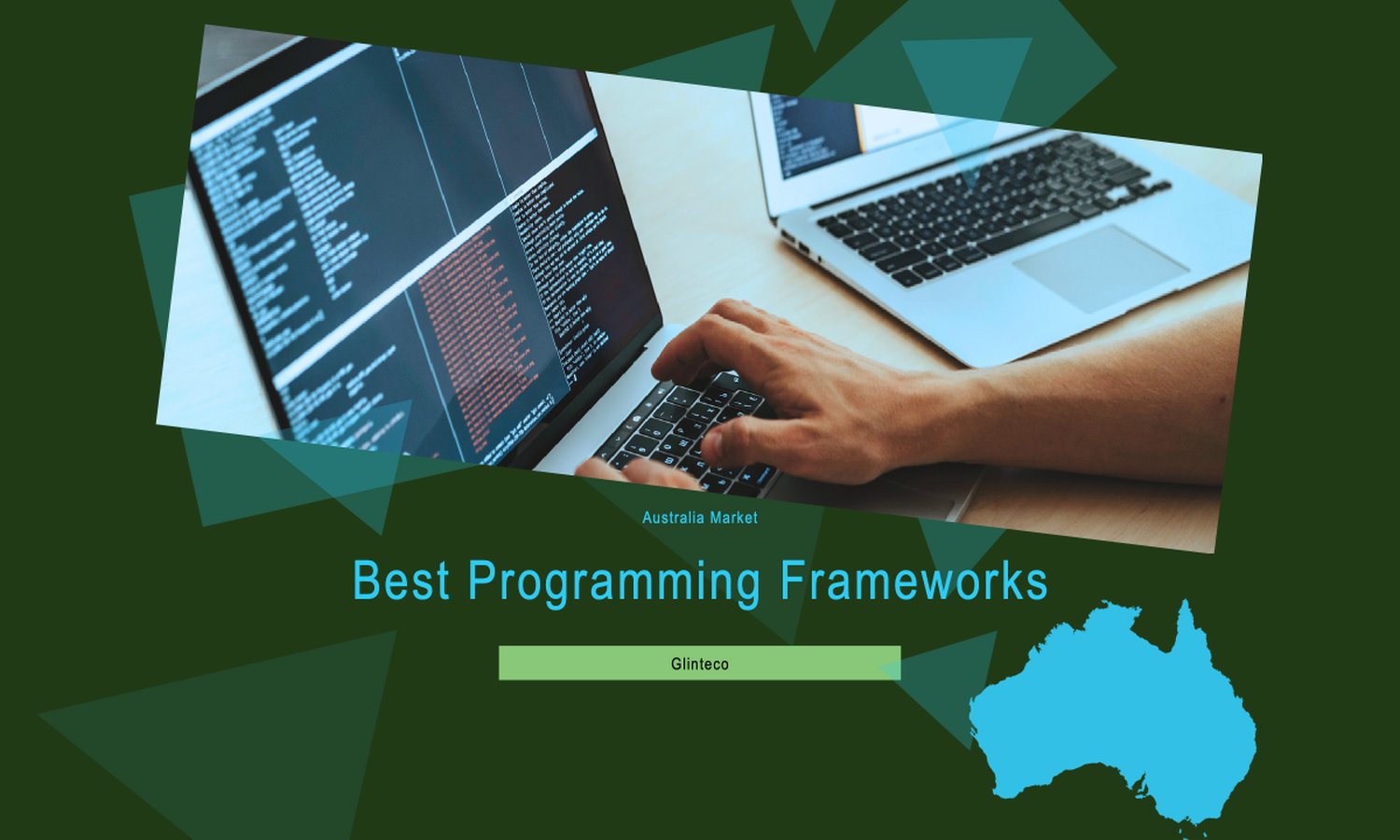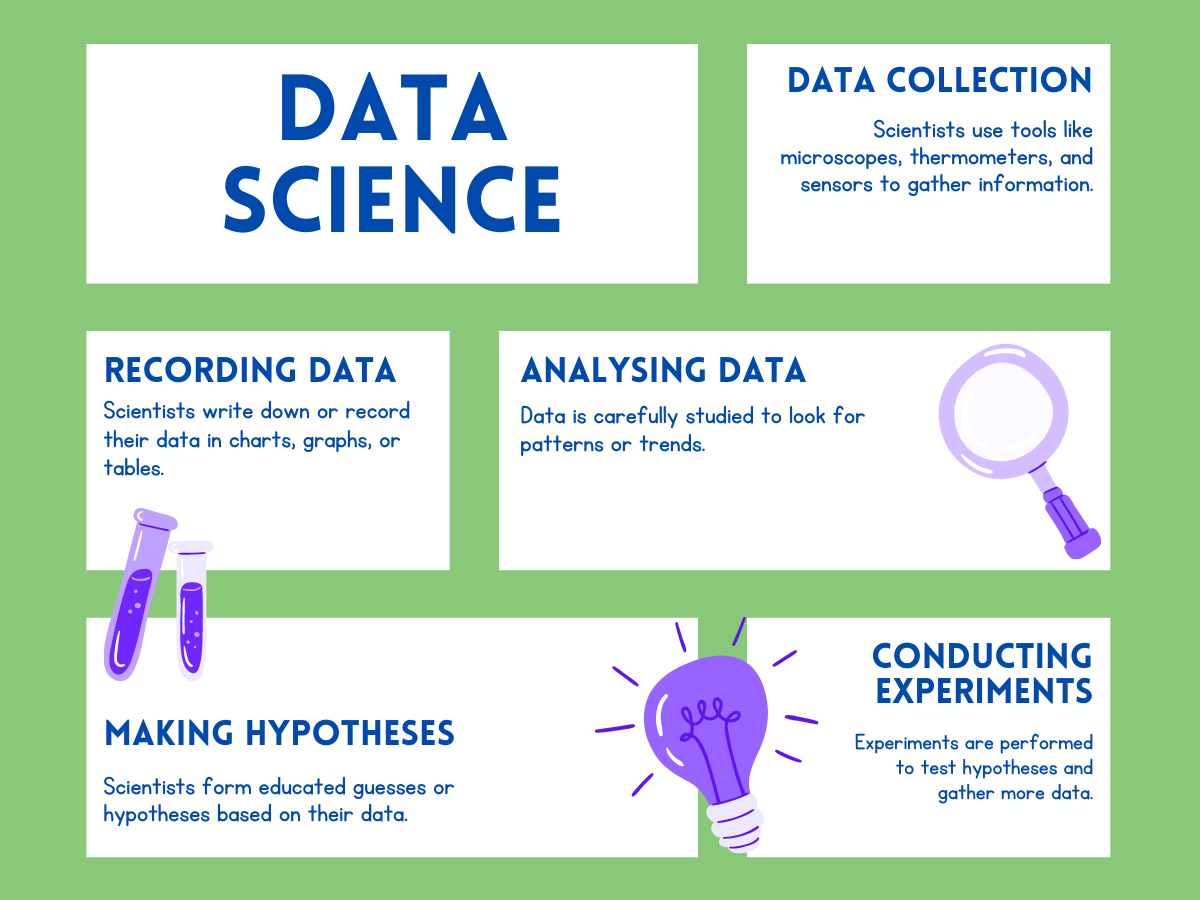Khung phát triển tốt nhất ở Úc
By dunghv, at: 10:30 Ngày 17 tháng 10 năm 2023
Thời gian đọc ước tính: __READING_TIME__ phút


Ngành công nghiệp công nghệ của Úc đang phát triển mạnh mẽ, với nhiều công ty và nhà phát triển tận dụng nhiều framework khác nhau để xây dựng các ứng dụng mạnh mẽ, khả năng mở rộng và hiệu quả. Cho dù là phát triển web, ứng dụng di động hay khoa học dữ liệu, những framework này đã chứng minh là những công cụ có giá trị cho hệ sinh thái công nghệ của Úc.
Dưới đây là một số framework tốt nhất đang được sử dụng rộng rãi ở Úc hiện nay
Framework Phát Triển Web
React
Tổng quan: Được phát triển và duy trì bởi Facebook, React là một thư viện JavaScript mạnh mẽ để xây dựng giao diện người dùng. Nó đặc biệt phù hợp cho các ứng dụng trang đơn.
Các tính năng chính:
- Kiến trúc dựa trên thành phần
- DOM ảo để cải thiện hiệu suất
- Hỗ trợ cộng đồng mạnh mẽ và hệ sinh thái rộng lớn
Sử dụng tại Úc: React được sử dụng rộng rãi bởi các công ty khởi nghiệp và doanh nghiệp lớn của Úc, bao gồm các công ty như Atlassian và Canva.
Mẹo dành cho Nhà phát triển:
- Tìm hiểu kiến thức cơ bản: Hãy chắc chắn rằng bạn hiểu JavaScript, ES6 và JSX trước khi bắt đầu tìm hiểu React.
- Sử dụng Thành phần chức năng: Ưu tiên các thành phần chức năng và móc hơn các thành phần lớp để có mã sạch hơn và dễ quản lý hơn.
- Khả năng tái sử dụng thành phần: Thiết kế các thành phần để có thể tái sử dụng và duy trì một phương pháp quản lý trạng thái nhất quán, chẳng hạn như sử dụng Redux hoặc Context API.
Mẹo dành cho Tổ chức/Doanh nghiệp:
- Chuẩn hóa công cụ: Triển khai một tập hợp các công cụ và thực tiễn phát triển nhất quán, chẳng hạn như sử dụng ESLint để kiểm tra lỗi và Prettier để định dạng mã.
- Đào tạo và phát triển: Đầu tư vào việc học tập và đào tạo liên tục cho nhóm phát triển của bạn để cập nhật các tính năng và thực tiễn tốt nhất mới nhất của React.
- Quy trình xem xét mã: Thiết lập các quy trình xem xét mã nghiêm ngặt để đảm bảo chất lượng mã và khả năng bảo trì.
Angular
Tổng quan: Angular là một framework ứng dụng web toàn diện được phát triển bởi Google. Nó được biết đến với các tính năng mạnh mẽ và khả năng tạo các ứng dụng quy mô lớn.
Các tính năng chính:
- Kết nối dữ liệu hai chiều
- Tiêm phụ thuộc
- Tài liệu và hỗ trợ toàn diện
Sử dụng tại Úc: Angular rất phổ biến trong số các nhà phát triển Úc để xây dựng các ứng dụng cấp doanh nghiệp phức tạp, đặc biệt là trong lĩnh vực fintech và chính phủ.
Mẹo dành cho Nhà phát triển:
- Thành thạo TypeScript: Vì Angular được xây dựng bằng TypeScript, nên việc hiểu rõ TypeScript là rất quan trọng.
- Tận dụng Angular CLI: Sử dụng Angular CLI để thiết lập dự án và phát triển để đơn giản hóa quy trình làm việc của bạn.
- Thiết kế mô-đun: Cấu trúc các ứng dụng của bạn bằng các mô-đun Angular để giữ cho mã của bạn được tổ chức và dễ bảo trì.
Mẹo dành cho Tổ chức/Doanh nghiệp:
- Áp dụng phương pháp Mô-đun: Khuyến khích phương pháp phát triển mô-đun để tạo điều kiện cho việc cập nhật và khả năng mở rộng dễ dàng hơn.
- Đảm bảo Tài liệu: Duy trì tài liệu toàn diện cho các dự án của bạn để giúp việc hướng dẫn các thành viên nhóm mới và bảo trì trong tương lai.
- Sử dụng Dịch vụ Angular: Sử dụng các dịch vụ Angular để chia sẻ dữ liệu và chức năng trên các thành phần khác nhau, thúc đẩy khả năng tái sử dụng và tách biệt các mối quan tâm.
Vue.js
Tổng quan: Vue.js là một framework JavaScript tiến bộ đang ngày càng phổ biến nhờ sự đơn giản và linh hoạt của nó. Nó được thiết kế để có thể áp dụng từng bước.
Các tính năng chính:
- Kết nối dữ liệu phản hồi
- Cấu trúc dựa trên thành phần
- Tích hợp dễ dàng với các dự án hiện có
Sử dụng tại Úc: Vue.js đang được nhiều nhà phát triển Úc áp dụng vì tính dễ sử dụng và tính linh hoạt của nó, đặc biệt là trong lĩnh vực khởi nghiệp.
Mẹo dành cho Nhà phát triển:
- Bắt đầu với kiến thức cơ bản: Làm quen với các khái niệm cốt lõi của Vue như chỉ thị, dữ liệu phản hồi và thành phần.
- Sử dụng Vue CLI: Sử dụng Vue CLI để nhanh chóng tạo khung cho các dự án mới và quản lý cấu hình.
- Quản lý trạng thái: Triển khai Vuex để quản lý trạng thái trong các ứng dụng lớn hơn để duy trì tính nhất quán.
Mẹo dành cho Tổ chức/Doanh nghiệp:
- Tiêu chuẩn mã hóa nhất quán: Thiết lập và thực thi các tiêu chuẩn mã hóa để duy trì chất lượng mã trên toàn nhóm.
- Xem xét mã thường xuyên: Thực hiện xem xét mã thường xuyên để đảm bảo tuân thủ các thực tiễn tốt nhất và để tạo điều kiện chia sẻ kiến thức.
- Đầu tư vào Đào tạo: Cung cấp các buổi đào tạo và tài nguyên để giúp nhóm của bạn cập nhật các thực tiễn tốt nhất và các tính năng mới của Vue.js.
Django
Tổng quan: Django là một framework web Python cấp cao khuyến khích phát triển nhanh chóng và thiết kế sạch sẽ, thực tiễn. Nó được biết đến với triết lý "batteries-included".
Các tính năng chính:
- ORM (Object-Relational Mapping) mạnh mẽ
- Giao diện quản trị tích hợp
- Các tính năng bảo mật mạnh mẽ
Sử dụng tại Úc: Django được các nhà phát triển Úc ưa chuộng khi làm việc với các ứng dụng web dựa trên dữ liệu, chẳng hạn như trong lĩnh vực chăm sóc sức khỏe và giáo dục.
Mẹo dành cho Nhà phát triển:
- Hiểu về Django Admin: Tận dụng giao diện quản trị tích hợp của Django để quản lý dữ liệu ứng dụng.
- Sử dụng ORM của Django: Tận dụng tối đa ORM của Django để tương tác với cơ sở dữ liệu của bạn bằng mã Python.
- Tuân theo các Thực tiễn tốt nhất: Tuân thủ các quy ước và thực tiễn tốt nhất của Django để cấu trúc các dự án và ứng dụng.
Mẹo dành cho Tổ chức/Doanh nghiệp:
- Thực tiễn bảo mật tốt nhất: Đảm bảo nhóm phát triển của bạn tuân theo các thực tiễn bảo mật tốt nhất của Django để bảo vệ dữ liệu nhạy cảm.
- Lập kế hoạch khả năng mở rộng: Lập kế hoạch khả năng mở rộng bằng cách sử dụng các tính năng của Django như bộ nhớ đệm và tối ưu hóa cơ sở dữ liệu.
- Cập nhật thường xuyên: Giữ cho Django và các phụ thuộc của nó được cập nhật để hưởng lợi từ các tính năng và cải tiến bảo mật mới nhất.
Framework Phát Triển Di động
Flutter
Tổng quan: Được phát triển bởi Google, Flutter là một bộ công cụ phát triển phần mềm giao diện người dùng mã nguồn mở để xây dựng các ứng dụng được biên dịch gốc cho thiết bị di động, web và máy tính để bàn từ một cơ sở mã duy nhất.
Các tính năng chính:
- Cơ sở mã duy nhất cho nhiều nền tảng
- Bộ widget được thiết kế sẵn phong phú
- Nạp lại nóng để lặp lại nhanh chóng
Sử dụng tại Úc: Flutter ngày càng phổ biến trong số các nhà phát triển ứng dụng di động của Úc vì hiệu quả và hiệu suất của nó, với việc sử dụng đáng chú ý trong các công ty khởi nghiệp và công nghệ.
Mẹo dành cho Nhà phát triển:
- Tìm hiểu Dart: Flutter sử dụng Dart làm ngôn ngữ lập trình của nó, vì vậy việc nắm vững Dart là điều cần thiết.
- Sử dụng Widget: Tận dụng thư viện widget rộng lớn của Flutter để tạo ra các giao diện người dùng phong phú, tương tác.
- Nạp lại nóng: Sử dụng tính năng nạp lại nóng để nhanh chóng nhìn thấy kết quả của các thay đổi của bạn và lặp lại nhanh hơn.
Mẹo dành cho Tổ chức/Doanh nghiệp:
- Chiến lược đa nền tảng: Phát triển một chiến lược rõ ràng cho việc phát triển đa nền tảng để tối đa hóa lợi ích của việc sử dụng Flutter.
- Giám sát hiệu suất: Triển khai các công cụ giám sát hiệu suất để đảm bảo các ứng dụng của bạn chạy trơn tru trên các thiết bị khác nhau.
- Tham gia cộng đồng: Tham gia cộng đồng Flutter để cập nhật xu hướng và thực tiễn tốt nhất mới nhất.
React Native
Tổng quan: React Native là một framework để xây dựng các ứng dụng gốc bằng cách sử dụng React. Nó cho phép các nhà phát triển viết ứng dụng cho iOS và Android bằng một cơ sở mã duy nhất.
Các tính năng chính:
- Cơ sở mã duy nhất cho iOS và Android
- Cộng đồng mạnh mẽ và thư viện rộng lớn
- Tích hợp với mã gốc khi cần
Sử dụng tại Úc: React Native được sử dụng rộng rãi bởi các công ty Úc để phát triển các ứng dụng di động đa nền tảng, bao gồm các ứng dụng nổi tiếng như Afterpay.
Mẹo dành cho Nhà phát triển:
- Tìm hiểu React: Trước khi bắt đầu tìm hiểu React Native, hãy đảm bảo bạn có hiểu biết vững chắc về React.
- Sử dụng Thư viện của bên thứ ba: Tận dụng các thư viện của bên thứ ba để mở rộng chức năng của các ứng dụng của bạn.
- Công cụ gỡ lỗi: Sử dụng các công cụ gỡ lỗi như React Developer Tools và Reactotron để khắc phục sự cố và cải thiện mã của bạn.
Mẹo dành cho Tổ chức/Doanh nghiệp:
- Thực tiễn phát triển nhất quán: Thiết lập các thực tiễn phát triển nhất quán trên toàn nhóm để đảm bảo chất lượng mã.
- Tích hợp gốc: Khi cần thiết, hãy sử dụng mã gốc để tăng hiệu suất và truy cập các tính năng cụ thể của nền tảng.
- Tối ưu hóa hiệu suất: Thường xuyên tối ưu hóa các ứng dụng của bạn để đạt hiệu suất cao, đặc biệt là đối với các tác vụ phức tạp hoặc sử dụng nhiều tài nguyên.

Framework Khoa Học Dữ liệu
TensorFlow
Tổng quan: Được phát triển bởi Google, TensorFlow là một nền tảng mã nguồn mở dành cho máy học. Nó được sử dụng rộng rãi để phát triển các mô hình học sâu.
Các tính năng chính:
- Thư viện rộng lớn các mô hình được đào tạo sẵn
- Hỗ trợ nhiều ngôn ngữ
- Khả năng mở rộng và sẵn sàng cho sản xuất
Sử dụng tại Úc: TensorFlow rất phổ biến trong số các nhà nghiên cứu và nhà khoa học dữ liệu của Úc cho các dự án về trí tuệ nhân tạo và máy học, bao gồm các ứng dụng trong chăm sóc sức khỏe và tài chính.
Mẹo dành cho Nhà phát triển:
- Hiểu kiến thức cơ bản: Làm quen với các khái niệm và chức năng cốt lõi của TensorFlow.
- Sử dụng các mô hình được đào tạo sẵn: Sử dụng các mô hình được đào tạo sẵn từ TensorFlow Hub để tiết kiệm thời gian và tài nguyên.
- Thử nghiệm với TensorFlow.js: Khám phá TensorFlow.js để triển khai các mô hình máy học trong trình duyệt.
Mẹo dành cho Tổ chức/Doanh nghiệp:
- Quản lý dữ liệu: Đảm bảo các thực tiễn quản lý dữ liệu mạnh mẽ để cung cấp dữ liệu chất lượng cho các mô hình của bạn.
- Giám sát mô hình: Triển khai các công cụ giám sát để theo dõi hiệu suất mô hình và đảm bảo độ tin cậy.
- Hợp tác với chuyên gia: Hợp tác với các chuyên gia về máy học để xây dựng và triển khai các mô hình chất lượng cao.
PyTorch
Tổng quan: Được phát triển bởi phòng thí nghiệm nghiên cứu AI của Facebook, PyTorch là một framework học máy mã nguồn mở cung cấp sự linh hoạt và tốc độ.
Các tính năng chính:
- Đồ thị tính toán động
- Hỗ trợ mạnh mẽ cho tăng tốc GPU
- Cộng đồng phát triển tích cực
Sử dụng tại Úc: PyTorch được các tổ chức học thuật và công ty công nghệ của Úc áp dụng rộng rãi vì tính dễ sử dụng trong nghiên cứu và phát triển các mô hình máy học.
Mẹo dành cho Nhà phát triển:
- Đồ thị tính toán động: Tận dụng đồ thị tính toán động của PyTorch để có nhiều sự linh hoạt hơn trong việc phát triển mô hình.
- Tăng tốc GPU: Sử dụng tăng tốc GPU để tăng tốc quá trình đào tạo và suy luận.
- Tài nguyên cộng đồng: Tham gia cộng đồng PyTorch và sử dụng các tài nguyên có sẵn để học tập và khắc phục sự cố.
Mẹo dành cho Tổ chức/Doanh nghiệp:
- Phân bổ tài nguyên: Đảm bảo có đủ tài nguyên tính toán để đào tạo các mô hình lớn, bao gồm cả quyền truy cập vào GPU.
- Học tập liên tục: Thúc đẩy môi trường học tập liên tục để bắt kịp những tiến bộ trong PyTorch và máy học.
- Hợp tác liên ngành: Thúc đẩy sự hợp tác giữa các nhà khoa học dữ liệu, kỹ sư và chuyên gia lĩnh vực để nâng cao kết quả dự án.
Pandas
Tổng quan: Pandas là một thư viện xử lý và phân tích dữ liệu mã nguồn mở cho Python. Nó được sử dụng rộng rãi để tiền xử lý và khám phá dữ liệu.
Các tính năng chính:
- Đối tượng DataFrame để xử lý dữ liệu
- Bộ công cụ phân tích dữ liệu toàn diện
- Tích hợp với các thư viện khoa học dữ liệu Python khác
Sử dụng tại Úc: Pandas là một công cụ chủ chốt cho các nhà phân tích và nhà khoa học dữ liệu của Úc, đặc biệt là trong lĩnh vực tài chính và nghiên cứu.
Mẹo dành cho Nhà phát triển:
- DataFrame: Thành thạo việc sử dụng DataFrame để xử lý và phân tích dữ liệu hiệu quả.
- Làm sạch dữ liệu: Sử dụng Pandas để làm sạch và chuẩn bị tập dữ liệu trước khi phân tích hoặc tạo mô hình.
- Trực quan hóa: Kết hợp Pandas với các thư viện trực quan hóa như Matplotlib hoặc Seaborn để có được trực quan hóa dữ liệu sâu sắc.
Mẹo dành cho Tổ chức/Doanh nghiệp:
- Chất lượng dữ liệu: Nhấn mạnh tầm quan trọng của chất lượng dữ liệu và đảm bảo các thực tiễn làm sạch dữ liệu nhất quán.
- Tích hợp: Đảm bảo tích hợp liền mạch của Pandas với các công cụ phân tích dữ liệu và học máy khác.
- Chương trình đào tạo: Cung cấp các chương trình đào tạo cho nhóm dữ liệu của bạn để tối đa hóa việc sử dụng Pandas và các công cụ liên quan.
Kết luận
Việc lựa chọn framework có thể ảnh hưởng đáng kể đến sự thành công và hiệu quả của một dự án. Tại Úc, một loạt các framework đa dạng đang được sử dụng trong nhiều ngành công nghiệp khác nhau để thúc đẩy đổi mới và cung cấp các giải pháp chất lượng cao. Từ phát triển web và di động đến khoa học dữ liệu, các framework này cung cấp các công cụ cần thiết để xây dựng thế hệ ứng dụng tiếp theo.
Tại Glinteco, chúng tôi luôn đi đầu trong xu hướng công nghệ và tận dụng các framework tốt nhất để cung cấp các giải pháp vượt trội cho khách hàng của mình. Liên hệ với chúng tôi ngay hôm nay để tìm hiểu thêm về cách chúng tôi có thể giúp bạn với nhu cầu phát triển của mình.





